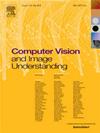FTM: The Face Truth Machine—Hand-crafted features from micro-expressions to support lie detection
IF 4.3
3区 计算机科学
Q2 COMPUTER SCIENCE, ARTIFICIAL INTELLIGENCE
引用次数: 0
Abstract
This work deals with the delicate task of lie detection from facial dynamics. The proposed Face Truth Machine (FTM) is an intelligent system able to support a human operator without any special equipment. It can be embedded in the present infrastructures for forensic investigation or whenever it is required to assess the trustworthiness of responses during an interview. Due to its flexibility and its non-invasiveness, it can overcome some limitations of present solutions. Of course, privacy issues may arise from the use of such systems, as often underlined nowadays. However, it is up to the utilizer to take these into account and make fair use of tools of this kind. The paper will discuss particular aspects of the dynamic analysis of face landmarks to detect lies. In particular, it will delve into the behavior of the features used for detection and how these influence the system’s final decision. The novel detection system underlying the Face Truth Machine is able to analyze the subject’s expressions in a wide range of poses. The results of the experiments presented testify to the potential of the proposed approach and also highlight the very good results obtained in cross-dataset testing, which usually represents a challenge for other approaches.
FTM:面部真实机器--从微表情中手工创建特征,支持谎言检测
这项工作涉及从面部动态侦测谎言的精细任务。所提出的面部真实机器(FTM)是一种智能系统,无需任何特殊设备即可为人类操作员提供支持。它可以嵌入到现有的法医调查基础设施中,也可以在任何需要评估访谈过程中回答的可信度的时候使用。由于其灵活性和非侵入性,它可以克服现有解决方案的一些局限性。当然,使用这种系统可能会产生隐私问题,这也是目前经常强调的问题。不过,使用者应该考虑到这些问题,并公平地使用这类工具。本文将讨论动态分析人脸地标以检测谎言的特定方面。特别是,本文将深入探讨用于检测的特征的行为,以及这些特征如何影响系统的最终决定。脸部真实机器所采用的新型检测系统能够分析被试者在各种姿势下的表情。所展示的实验结果证明了所提出方法的潜力,同时也凸显了在跨数据集测试中取得的优异成绩,而这通常是其他方法所面临的挑战。
本文章由计算机程序翻译,如有差异,请以英文原文为准。
求助全文
约1分钟内获得全文
求助全文
来源期刊

Computer Vision and Image Understanding
工程技术-工程:电子与电气
CiteScore
7.80
自引率
4.40%
发文量
112
审稿时长
79 days
期刊介绍:
The central focus of this journal is the computer analysis of pictorial information. Computer Vision and Image Understanding publishes papers covering all aspects of image analysis from the low-level, iconic processes of early vision to the high-level, symbolic processes of recognition and interpretation. A wide range of topics in the image understanding area is covered, including papers offering insights that differ from predominant views.
Research Areas Include:
• Theory
• Early vision
• Data structures and representations
• Shape
• Range
• Motion
• Matching and recognition
• Architecture and languages
• Vision systems
 求助内容:
求助内容: 应助结果提醒方式:
应助结果提醒方式:


